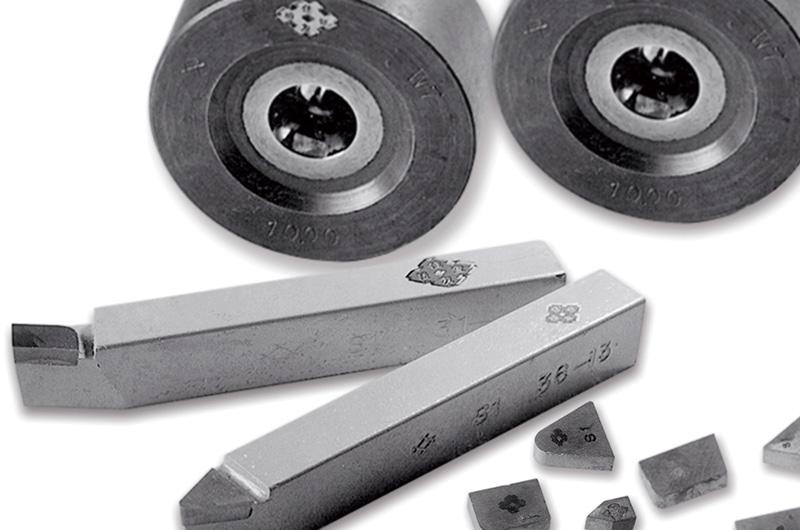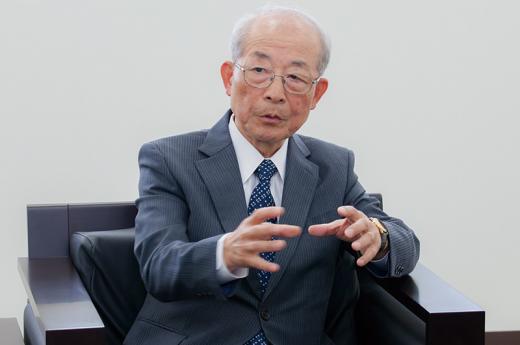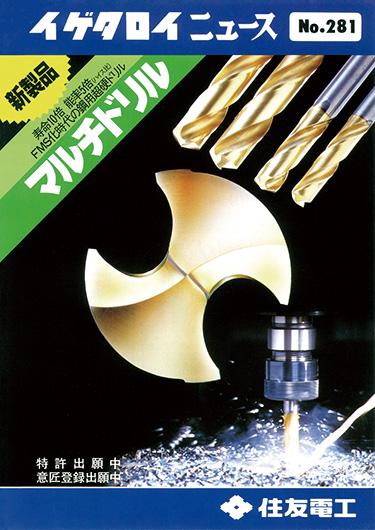
The Challenges to Innovate Manufacturing Industry
Social demand for next-generation manufacturing
Productivity improvement and cost reduction have long been on the list of the most important challenges to the manufacturing industry. Rapidly advancing technological innovations, such as information and communication technology (ICT), served as an engine to meet these challenges. Currently, attempts are made to innovate the manufacturing industry with further considerations for high efficiency, labor saving and reduced environmental burdens with the keyword being “Internet of Things (IoT).”* For example, things such as factory facilities and equipment are connected to the Internet for data acquisition and analysis. These efforts are undergoing acceleration to enable productivity improvement. In other words, the goal is to realize a connected or smart factory, by virtue of IoT. This is known as “Industry 4.0” or the Fourth Industrial Revolution.
The Sumitomo Electric Group has contributed to productivity improvement and cost cutting by providing an extensive range of cutting tool products made of cemented carbide, cubic boron nitride (CBN), and sintered diamond to name a few. Among these products, this feature article focuses on the Multidrill. In 1984, Sumitomo Electric launched the Multidrill into the market, a revolutionary product that brought innovation to manufacturing industry on a global scale. The following introduces the untold development stories, the present and future prospects of the Multidrill.
* The concept of connecting a myriad of things to the Internet for information exchange in order to convert things to data and advance automatization based on the data, and thus creating new value.
It Started with Igetalloy.
Multidrill Development History
Cemented Carbide Revolutionized Cutting Tools and Changed the Manufacturing Industry
Before the development of cemented carbide in Germany, most cutting tools were made of high-speed steel. Cemented carbide enabled cutting tools to evolve into ultra-hard tools.
Cemented carbide is a composite material produced by mixing and sintering hard tungsten carbide and cobalt. The material features high hardness, high wear resistance and high heat resistance. It enables machining at a higher speed than high-speed steel. Cemented carbide innovated the cutting process. The world’s first cemented carbide was invented in Germany in 1923. It was launched into the market in 1927. Sumitomo Electric began to study the material in the same year. In 1928, the Company successfully developed a prototype wire-drawing die (a tool used to finish wires to a specified diameter) made of cemented carbide. In 1931, cemented carbide cutting tools were commercialized under the brand “Igetalloy™.” Since then, Igetalloy™ has evolved into an extensive range of products to fulfill all kinds of machining needs covering turning, milling, end milling and drilling.

Development of Cemented Carbide Drills Designing Chip Formation
In more than 80 years of the history of cemented carbide, the development and launch of cemented carbide drills was an epoch-making event, which enabled machining in the manufacturing industry to undergo a remarkable evolution. In the area of drilling, it had been believed difficult to use cemented carbide for strength reasons. In 1982, Yoshikatsu Mori (presently, Senior Engineer at Sumitomo Electric Hardmetal Corp.) daringly met this challenge.

“The development of cemented carbide drills began with their application to castings and other relatively easy-to-drill materials. In the late 1970s, cemented carbide drills that could machine steel began to come into wide use. These drills had a steel shank for tool mounting purposes and spiral flutes with a cemented carbide cutting edge brazed at the tip, and were 12 mm or more in diameter. However, a survey of how high-speed steel drills were used revealed that an overwhelming proportion of them were mostly 10 mm or less in drilling diameter. Therefore, we undertook a development project envisioning the development of small-diameter drills at first, and then applied the results to large-diameter drills,” says Mori.
Drills differ from other cutting tools in that they need to additionally have the function of evacuating chips produced during cutting from the bottom of the hole. This was the inhibiting factor in developing a cemented carbide drill. One essential requirement for drills in machining is that they do not break. If chips are not evacuated, the drills will break. To clear chips smoothly, the flutes must be wide. If wide flutes are provided, it will result in an accordingly reduced cross-sectional area, and the drill will decrease in strength. In summary, the point was how to enlarge the cross-section of the drill for improved strength and remove chips smoothly through the narrowed flutes. This was the most difficult challenge.
“We took note of the chips. Large chips become stuck in the flutes of the drills. However, short and thinly cut chips are smoothly ejected. Through repeated prototype development and evaluation processes, we discovered that by adopting an arc-shaped cutting edge, it was possible to produce short and thinly cut chips for smooth evacuation. This was the most significant breakthrough in developing cemented carbide drills,” recalls Mori.
Market valued the excellent machining efficiency of Multidrill

In 1984, after a two-year development period, production and sale of the Multidrill commenced. The market enthusiastically welcomed the product. The Multidrill was selected successively by a number of customers, including major automakers and demand for it grew rapidly. Compared with the conventional high-speed steel drills, the Multidrill boosted machining efficiency 4- to 10-folds, enabling drastic productivity improvement in machining.
Nonetheless, a drill is a cutting tool that may in some cases fail to demonstrate its true performance depending on the machine with which it is used, the condition settings, and usage. As a solution to this matter, they promoted educational activities such as visits for users, the development and provision of a training framework and the holding of training seminar. These efforts spurred the widespread use of the Multidrill. More importantly, it was significant to build a service network. During use, the cutting edges of a drill wear and become ineffective in cutting. To use the drill again, the cutting edges need to be re-sharpened to return them to their original condition. Naturally, the quality of the re-sharpened cutting edges must be as good as those of a brand new drill. At the same time, customers demand that they provide the service at low cost and within a short delivery schedule. To meet these challenges, they built a new model of a re-sharpening network by establishing a partnership with grinding service companies across Japan. Additionally, they worked on the development of re-sharpening equipment and provided programs to machine manufacturers.
“The Multidrill was once thought to be miles away from commercialization. Now I recall this time with fondness. It is true that I have striven to bring dreams closer to reality with my colleagues, navigating many twists and turns. I have acquired substantial knowledge. My next challenge is to contribute to the evolution of the Multidrill by transferring my knowledge to many people,” says Mori.

Registration of public notification
If you register your e-mail address, we will notify you when the latest issue is published. If you wish, please register from the registration form.
To delete your registration, please visit here.
